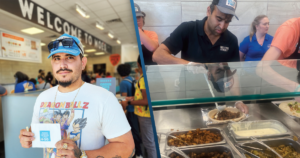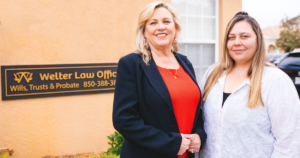 The Connected City is officially coming to Wesley Chapel.
The Connected City is officially coming to Wesley Chapel.
“I think we realize we actually made history today,’’ said District 2 commissioner and Pasco Board of County Commissioner (BCC) chairman Mike Moore.
After months of delays and negotiations, Metro Development Group finally put forth a polished plan that the BCC could not only live with, but gush over.
The commissioners approved the massive project at its Feb. 7 meeting in New Port Richey by a unanimous 5-0 vote.
Both sides were pleased to see the plan to build the nation’s first gigabit community constructed from the ground up move forward. It was viewed by the commissioners as a seminal moment for Pasco County.
“I think it’s going to turn out to be one of the greatest things we’ve done here in Pasco County,’’ said District 1 commissioner Ron Oakley, who was elected in November.
“I’m very jealous this is in your district,’’ District 3 commissioner Kathryn Starkey told Oakley.
The Connected City is a 7,800-acre area running north from Overpass Rd. in Wesley Chapel to S.R. 52 in San Antonio, and west from I-75 to Curley Rd.

It has been touted by developers and planners as a first-of-its-kind, high-tech economic engine that will promote major job creation, alternative transportation along integrated roadways and not just one, but two first-in-the-country, man-made Crystal Lagoons.
One of those lagoons recently broke ground at the Epperson Ranch development off Curley Rd. (see story, pg. 6), while the other lagoon is expected to break ground later this year at the planned Mirada development in the northwest corner of the Connected City, just south of the S.R. 52 exit off I-75.
Metro owns roughly 35 percent of the land and is already building homes in Mirada and Epperson Ranch; they plan to begin selling those homes by the end of the year.
The project is part of a 10-year pilot program created by Senate Bill 1216 in May of 2015. It allows for an expedited planning and approval process for creating city-connected corridors. For the length of the pilot program, there will be no state oversight, although there will be two-year reviews.
More than 100 Wesley Chapel residents showed up to the first public meetings at Wesley Chapel Elementary in December of 2015 regarding the Connected City, voicing concerns about the impact on the Florida aquifer, the effect on sewers and sinkholes and how construction would impact the area, which they said was already prone to flooding.
At the final public hearing and vote, only one person spoke.
The longer-than-expected 18-month process to gain approval required a number of adjustments, from scrapping plans to form a committee that would bypass county oversight to contributing $7 million to build additional roads to rigorous debate over mobility fee credits.
“We worked very closely with the county throughout the entire process — they are our public partner on the Connected City, so we were sure to be flexible during the planning process to meet their requests,’’ said Kartik Goyani, vice president of operations with Metro Development and the man credited with being the visionary behind the Connected City.
“Every hoop, question and demand illustrates the hard work that goes into a project like this,” Goyani added. “The success of the Connected City is indicative of true collaboration and dedication to a common goal.”
With 72 acres of site-ready employment centers set aside, as well as commitments from Tampa General Hospital, Florida Hospital and Saint Leo University for proposed centers, and the potential for a number of tech start-ups, the project’s promise of job creation convinced District 4 commissioner Mike Wells Jr. of the merits of the Connected City.
Wells’ father, Mike Sr., was involved decades ago in the development of Trinity on the west side of the county.
“The Board wasn’t really sold on bringing that forward,” Wells Jr. said. “But as a Board, they moved forward on it and look at what Trinity is today. (During this process) I have pondered that. I know more about connected cities than I ever wanted to know. But, at the end of the day, I feel it is right for the county. It comes down to jobs creation to me.”
Wells Jr. added that despite his support, he would hold developers accountable for those promised job creations.
Ernie Monaco, the county’s assistant planning and development administrator, has been one of the leading – and more excitable – proponents of the Connected City.
He says that as a result of the project, planners have written new development code that could be extended to areas beyond the huge development itself.
He also listed a number of things that will put Pasco on the cutting edge – things like driverless vehicles, clean energy homes, incentives for builders and employers, improvements in local schools, innovative healthcare and a business community that keeps area residents from having to move away to find good employment opportunities.
“That’s the kind of future we want,” Monaco said.
The commissioners agreed, unanimously. Despite the delays and countless meetings, the Connected City promises to be a game changer, Moore said.
“All eyes are going to be upon us now,” he said. “So get ready.”
For more information about the Connected City, visit PascoCountyFL.net/=2319.




No comment yet, add your voice below!